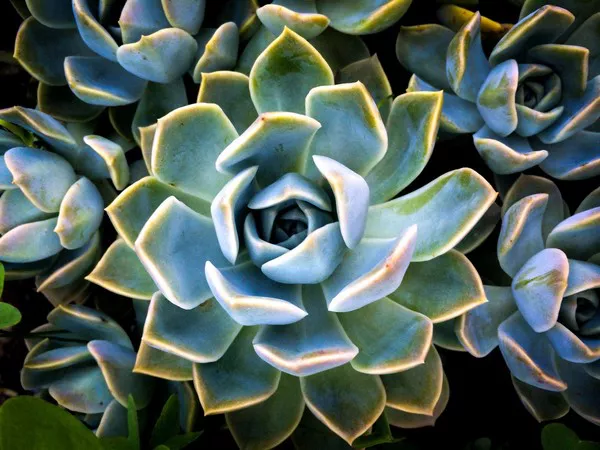Succulents have gained immense popularity in recent years, becoming a favorite among plant enthusiasts and novice gardeners alike. Their unique and diverse forms, coupled with their ability to thrive in various environments, make them an attractive addition to any indoor or outdoor space. In this comprehensive guide, we will explore the essential steps on how to start new succulents, ensuring a successful and rewarding journey into succulent cultivation.
Understanding Succulents
Before delving into the specifics of succulent propagation, it’s crucial to have a basic understanding of what succulents are. Succulents are a group of plants characterized by their ability to store water in specialized tissues, enabling them to withstand arid conditions. This adaptation makes them resilient and low-maintenance, making them an ideal choice for both seasoned gardeners and beginners.
Selecting the Right Succulents
Choosing the right succulents is the first step in starting a successful succulent garden. Consider the climate and sunlight conditions of your location, as different succulent varieties have specific preferences. From the iconic Aloe Vera to the charming Echeveria, each succulent species has its unique charm and care requirements. Researching and selecting succulents that are well-suited to your environment will set the foundation for a thriving garden.
Succulent Propagation Methods
There are several methods for propagating succulents, and each has its own advantages and challenges. The most common methods include leaf propagation, stem cutting, and division. Leaf propagation involves growing new succulents from individual leaves, while stem cutting involves planting a severed portion of a healthy succulent stem. Division entails separating offsets or pups from the mother plant to create new, independent succulents. Understanding these methods will empower you to choose the most suitable approach for your selected succulent varieties.
See Also: How to Start a Succulent Garden Indoors?
Preparing the Soil
The key to successful succulent cultivation lies in well-draining soil. Succulents despise waterlogged conditions, as excessive moisture can lead to root rot. Opt for a specialized succulent or cactus mix, or create your own by combining regular potting soil with perlite or coarse sand. This ensures proper drainage and prevents water from accumulating around the roots, promoting a healthy and thriving succulent garden.
Potting and Container Selection
Selecting the right containers is crucial when starting new succulents. Choose pots or containers with drainage holes to prevent water from pooling at the bottom. This helps maintain the ideal moisture levels and prevents root rot. Additionally, consider the aesthetic aspect of your containers – succulents come in various shapes, sizes, and colors, so selecting complementary pots can enhance the overall visual appeal of your succulent garden.
Watering Succulents: A Delicate Balance
Contrary to popular belief, succulents do need water, but it’s essential to strike a delicate balance. Overwatering is a common mistake that can lead to root rot and other issues. Water your succulents sparingly, allowing the soil to dry out between waterings. The frequency of watering depends on factors such as climate, temperature, and the type of succulent. Observing your plants and adjusting your watering routine accordingly is key to maintaining a healthy and vibrant succulent garden.
Providing Adequate Sunlight
Succulents thrive in bright, indirect sunlight. While they can tolerate some shade, insufficient light can result in stretched, etiolated growth. Place your succulents in a location where they receive at least 6 hours of sunlight per day. South or west-facing windows are ideal, but if natural light is limited, supplement with artificial grow lights to ensure your succulents get the light they need for optimal growth.
Temperature and Humidity Considerations
Succulents are adapted to arid conditions, so they generally prefer warm temperatures. Most succulents thrive in a temperature range between 60°F to 80°F (15°C to 27°C). It’s essential to protect them from frost and extreme cold, as succulents are not frost-resistant. Additionally, succulents prefer low humidity levels, making them well-suited for indoor environments. Adequate ventilation is crucial to prevent issues like fungal diseases that may arise in humid conditions.
Fertilizing Succulents
While succulents are known for their ability to thrive in nutrient-poor soils, they do benefit from occasional fertilization. Use a balanced, diluted succulent fertilizer during the growing season (spring and summer) to provide essential nutrients. However, avoid over-fertilizing, as succulents are sensitive to excessive nutrients, which can lead to adverse effects.
Monitoring and Preventing Pests
Succulents are generally resilient to pests, but it’s essential to keep an eye out for common invaders like aphids, mealybugs, and spider mites. Regularly inspect your succulents for any signs of pests, and if detected, take prompt action to prevent infestations. Insecticidal soap or neem oil are effective, environmentally friendly options for controlling pests without harming your succulents.
Patience and Observation: Keys to Success
Cultivating succulents is a journey that requires patience and careful observation. Each succulent has its own growth pattern and timeline, so it’s essential to be attentive to the unique needs of each species. Take note of any changes in color, shape, or size, as these can be indicators of your succulent’s health and well-being. By patiently observing your plants, you’ll develop a deeper understanding of their individual requirements and be better equipped to address any issues that may arise.
Conclusion
Starting new succulents is a gratifying and enjoyable experience that allows you to witness the fascinating world of plant growth and propagation. By selecting the right succulents, providing the appropriate care, and being attentive to their needs, you can create a stunning succulent garden that adds beauty and charm to your living space. Remember to highlight the keyword “succulents” throughout your journey, from selecting the right varieties to nurturing them to maturity. With the right knowledge and dedication, your succulent garden will flourish, bringing joy and a touch of nature to your surroundings.


